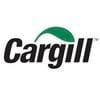Serological response to PCV2 and the detection of PCV2 viremia after vaccination with different PCV2 vaccines
Published: April 16, 2025
Source : P. Astrup 1,* / 1 MSD Animal Health, Copenhagen, Denmark.
Summary
Keywords: Efficay, PCV2 vaccines, Viremia
Introduction:
Measuring the level of PCV2 virus and/or the level of IgG/IgM in blood samples can be used to assess if pigs are infected or not during the later stages of fattening. The purpose of this case study was to investigate if PCV2-virus is detected or serologically active in fattening herds with pigs vaccinated at 4 weeks (± 7 days) of age with Porcilis® PCV, CircoFLEX, Circovac or Suvaxyn PCV.
Materials and Methods:
In seventeen herds vaccinating with Suvaxyn PCV, twelve herds vaccinating with Circovac, twelve herds vaccinating with Porcilis® PCV and eleven herds vaccinating with Ingelvac CircoFLEX, five blood samples were taken at approx. 16 - 17 weeks of age (12 - 13 weeks after vaccination) and five blood samples were taken at approx. 21 - 22 weeks of age (18 - 19 weeks after vaccination) in the fattening unit. The samples originated from clinically healthy pigs and were tested for IgM/IgG in Ingenasa, Ingezim Circovirus IgG/IgM, and by qPCR for the presence of viral DNA. In total 2*5 samples and 2 pools of five per herd were tested.
The primary immune response leads to a detectable IgM level that is replaced by a secondary IgG response. In the present cases, the first age group was sampled at least 70 days after vaccination and the IgM values should theoretically be negative, if the vaccination provided full protection. For the PCR test, negative results were expected to be a more common result if vaccinated pigs were fully protected following vaccination.
Results:
In the Porcilis® PCV vaccinated pigs, eleven out of twelve herds had IgG positive samples, two herds had IgM positive samples, but no herds were PCV2 positive by PCR. In the CircoFLEX vaccinated pigs, nine out of eleven herds had IgG positive samples, no herds were IgM positive, but two herds had PCV2 positive PCR results. In the Circovac vaccinated pigs, eleven out of twelve herds had IgG positive samples, six herds had IgM positive samples and three herds were PCV2 positive by PCR. In Suvaxyn PCV vaccinated herds, fourteen out of seventeen herds were Ig G positive, eleven herds had IgM positive samples and eight herds were PCV2 positive by PCR.
Conclusion:
In conclusion, the Porcilis® PCV herds remained PCV2 virus negative and only a few herds had a primary serological response. In comparison, a few CircoFLEX herds were PCV2 virus positive, while Circovac and Suvaxyn PCV herds appeared the least protected as indicated by IgM response and PCV2 viremia. These results may be indicative of a difference in the protective capabilities of PCV2 vaccines.
Disclosure of Interest: P. Astrup Conflict with: Employee at MSD Animal health.
Published in the proceedings of the International Pig Veterinary Society Congress – IPVS2016. For information on the event, past and future editions, check out https://www.theipvs.com/future-congresses/.
Content from the event:
Related topics:
Recommend
Comment
Share

Would you like to discuss another topic? Create a new post to engage with experts in the community.









